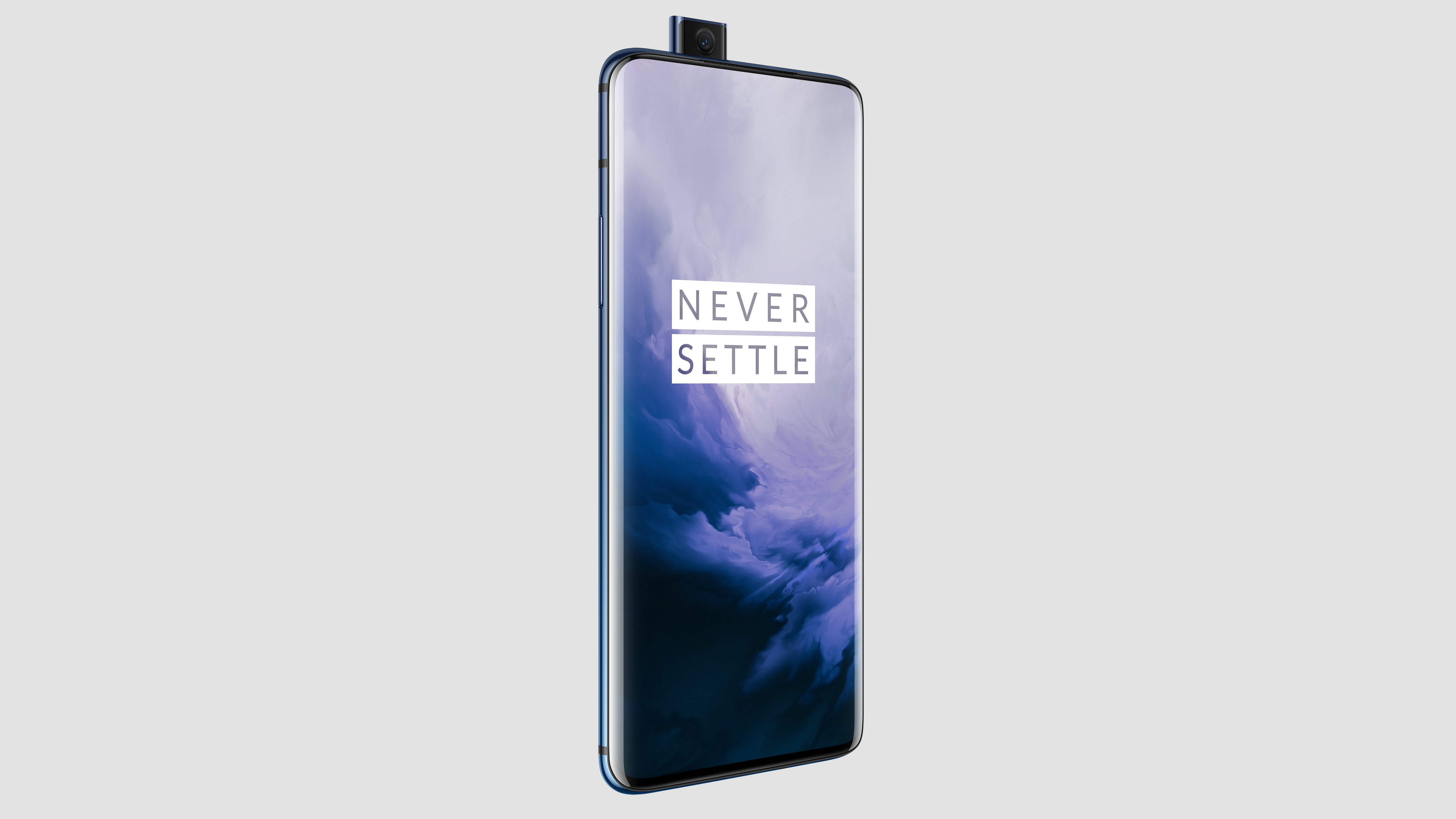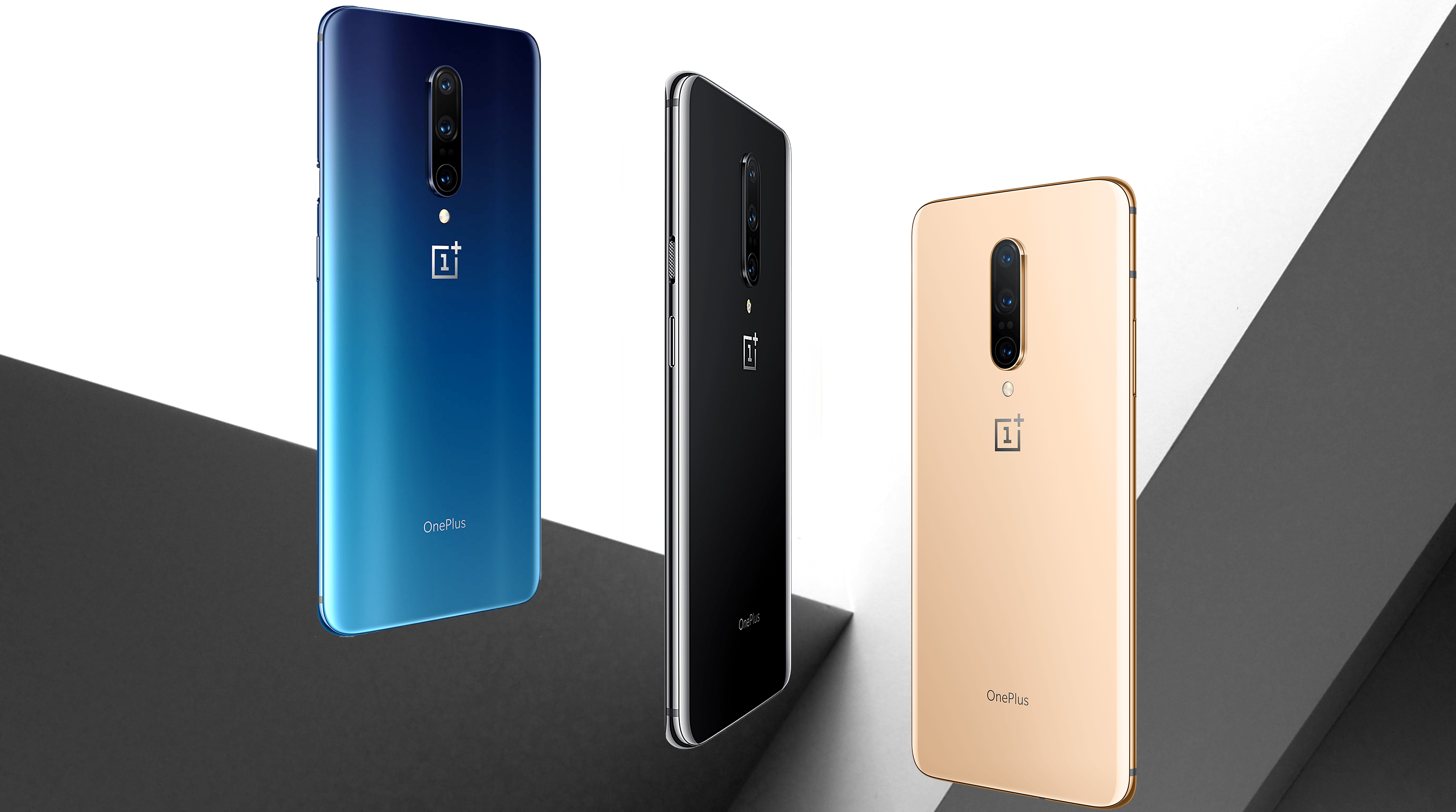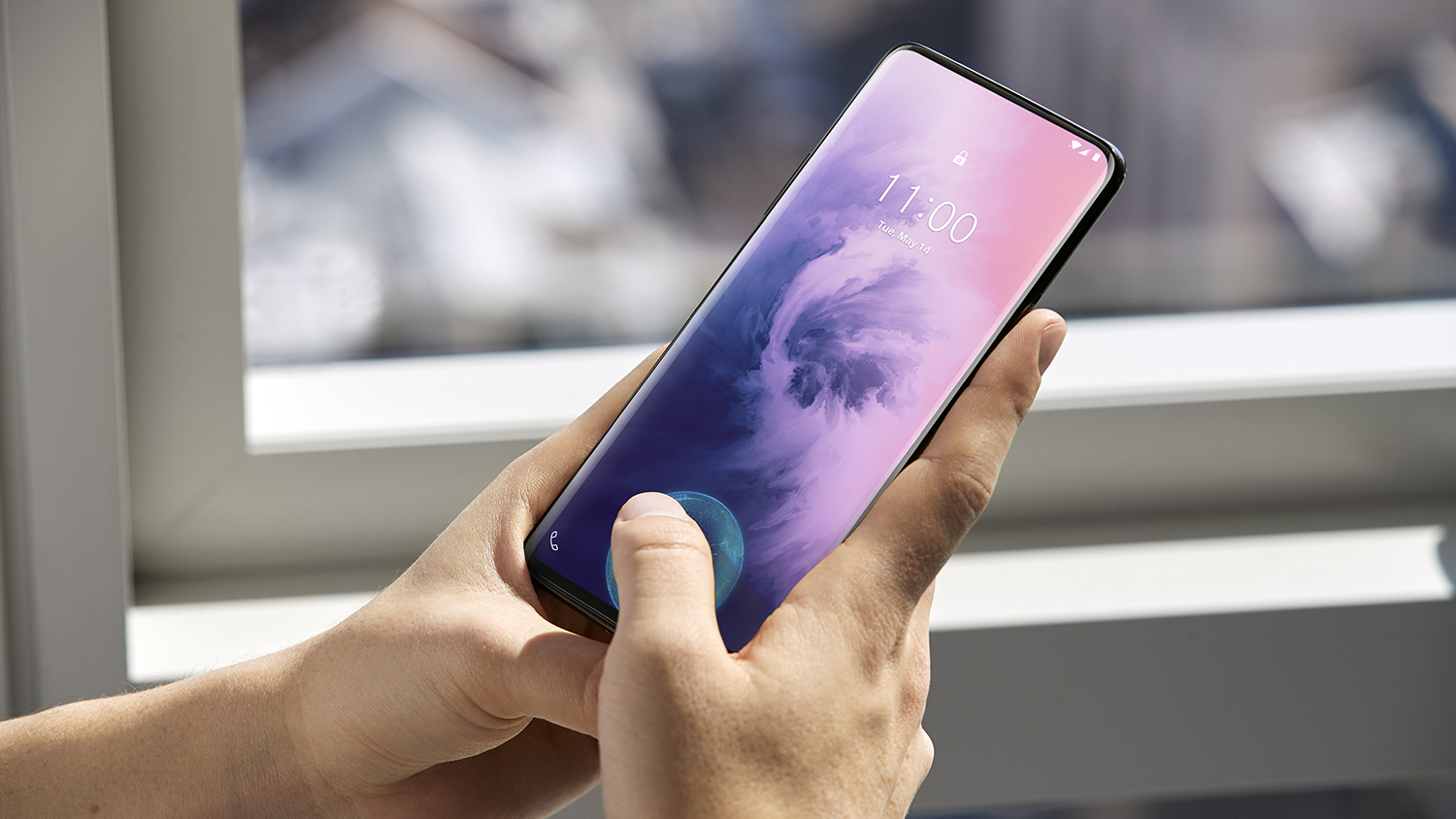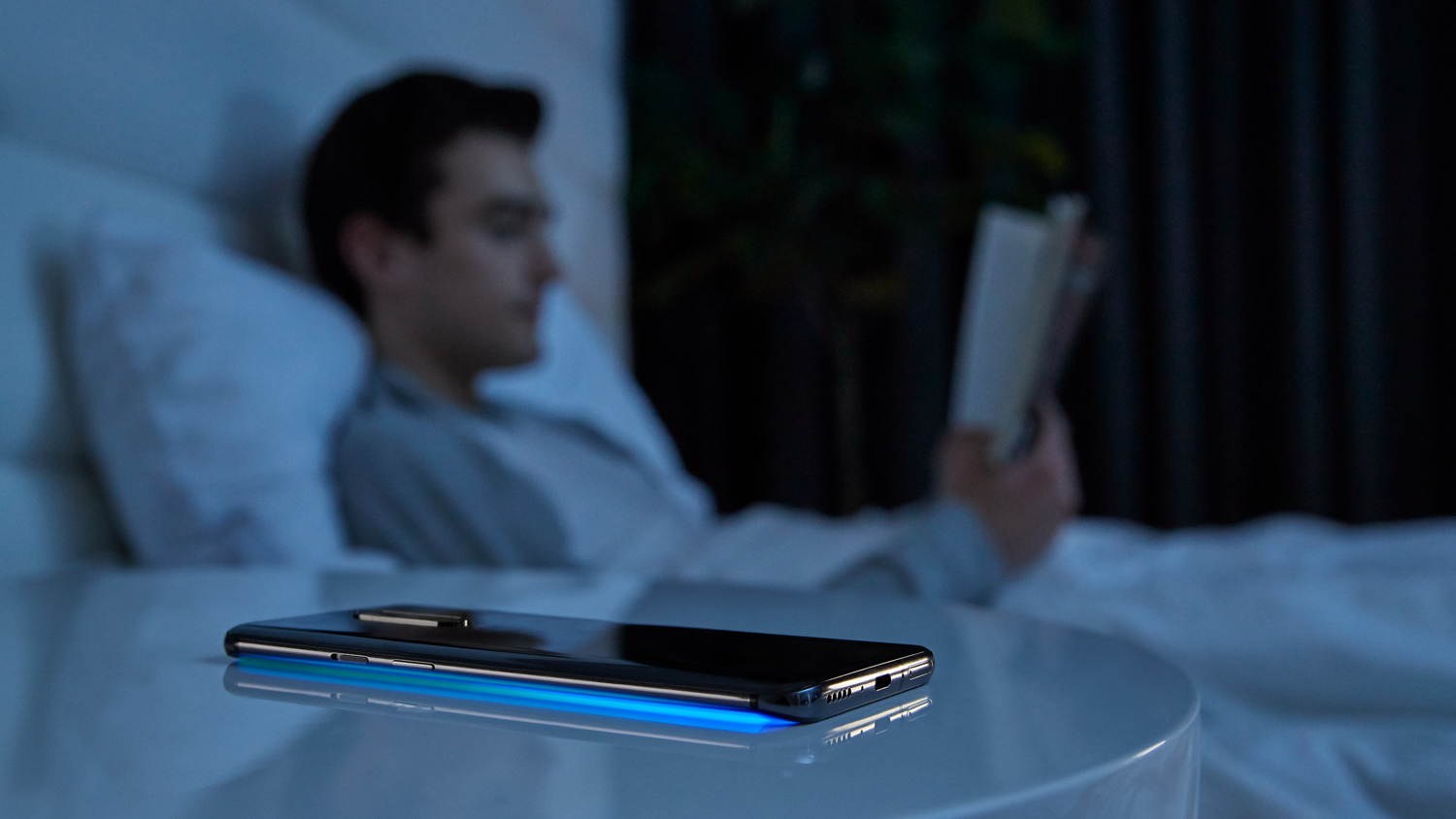OnePlus 7 Pro review: awesome screen and speed are unrivalled, the price is not
OnePlus 7 Pro is the first time the company has competed on features – not on price


OnePlus 7 Pro is an ambitious, brawny, beautiful flagship that shows what this spunky start-up is capable of when it's not designing a budget-conscious device. The 90Hz Fluid AMOLED is gorgeous, the handset is blink-and-you'll-miss-it fast, and the 30W Warp Charging is unmatched. However, there are other areas where the OnePlus 7 Pro isn't quite on the same level as similarly priced rivals like the Samsung Galaxy S10e and iPhone XR – there's no wireless charging, no expandable storage, no adjustable bokeh blur in Portrait Mode, no IP Rating for water resistance... the list goes on. There's a lot to love here, but the new higher price tag means you'll want to look closely at the competition before you take the plunge.
-
+
Buttery Smooth 90Hz Display
-
+
Flawless, Google-beating performance
-
+
30W Warp Charing is astoundingly quick
-
+
Gorgeous design and colourways
-
-
Awful camera pop-up
-
-
No wireless charging
-
-
No IP rating
Why you can trust T3

OnePlus 7 Pro Key Specs

Dimensions: 162.6x75.9x8.8 mm
Weight: 206 g
Screen: 6.67-inch AMOLED, 90Hz, 3120 x 1440 at 516 ppi
CPU: Qualcomm Snapdragon 855
RAM: 6GB / 8GB / 12GB
Storage: 128GB / 256GB
Battery: 4,000mAh
Cameras: 48MP main + 8MP telephoto + 16MP ultra-wide / 16MP selfie
OS: OxygenOS / Android 9.0 Pie
OnePlus 7 Pro marks a dramatic departure for the Chinese company. Until now, OnePlus has always launched a single flagship handset each year, with an iterative update pushed out the door ahead of the Black Friday sales in November.
However, OnePlus has really shaken things up with the OnePlus 7 series. For the first time, fans now face a choice: do they want to pay the same £499 price tag seen on the OnePlus 6 and get the OnePlus 7 – an iterative update with faster internals, improved vibration motor, more accurate in-screen fingerprint scanner and tweaked camera? Or do they want to cough-up £799 for the OnePlus 7 Pro – a brawny handset that shows what OnePlus is really capable of when it flexes its muscles, whatever the cost?
As a result, OnePlus 7 Pro is easily the most ambitious handset ever conceived by the plucky Shenzhen start-up. It's also a very different proposition from a company that has always positioned its devices as "Flagship Killers" – designed to convince consumers they didn't have to cough-up for a Samsung or Apple-esque price tag to get the same specs, performance, design, and fit-and-finish. Lest we forget, the company charged just £329 for its flagship phone three years ago.
So, is the OnePlus 7 Pro worth almost twice as much as the OnePlus 7? And more importantly, after years of disparaging flagship smartphones from Apple, Samsung and Huawei with its aggressively-priced rivals, has OnePlus done enough to convince us that it's worth paying the price tag it used to openly mock?
Read our in-depth OnePlus 7 Pro review to find out …
OnePlus 7 Pro Review: Price, Release Date
Just how much do you have to pay for the best OnePlus can muster? While it's comfortably the costliest handset ever launched by the company, the OnePlus 7 Pro starts at a fairly reasonable £649.
For that, you'll get 6GB of RAM and 128GB of non-expandable storage. Sadly, this entry-level model is only available in the Mirror Grey finish, which is basically identical to the glossy Mirror Black colour seen on the OnePlus 6 last year and isn't anywhere near as nice as the Nebula Blue finish.
Get all the latest news, reviews, deals and buying guides on gorgeous tech, home and active products from the T3 experts
Those who want beefier specs, more storage, or some slick new colour options will have to cough-up at least £699 for the 8GB/256GB variant. This is available in Mirror Grey, Nebula Blue, and Almond. The latter boasts a gorgeous cream-ish glass colour with a brushed bronze-gold band around the chassis, while Nebula Blue takes a leaf from the Huawei P20 playbook and includes a gradient effect that transitions from a dark to a light shade of blue depending on how the light hits it. It's absolutely stunning – and OnePlus knows it, since this will be the only colour option available on the maxed-out 12GB/256GB model, which costs £799.
OnePlus 7 Pro hit shelves worldwide on May 21, except for the Almond finish, which won't be available until an unspecified date in June. There's also a 5G-enabled variant of the OnePlus 7 Pro which ships exclusively on mobile carrier EE in the UK.

OnePlus 7 Pro Review: Display, Design
From the moment you pick-up the OnePlus 7 Pro, it's clear this is a very different beast from previous efforts. It feels premium, weighty and well-built.
Granted, OnePlus still can't quite match the iPhone XR and Galaxy S10e in terms of build-quality – no other manufacturer boasts quite the same high level of fit-and-finish as those two. However, it's right up there with the likes of the Huawei P30.
As with every other flagship smartphone launched in the last few years, OnePlus 7 Pro has glass front and rear panel, held together with an aluminium band. And like every other flagship, it makes for a slippery combination.
It's worth noting that while the OnePlus 7 Pro gets the whatever you do, don't drop it risks associated with this type of all-glass case, it misses out on one of the only benefits of this design: wireless charging. Yes, OnePlus has decided against incorporating the feature again. The company says the technology isn't fast enough when compared to its own speedy wired charging solutions.
While nobody is going to argue with that bulletproof argument, it would still be really nice to have – not least because wireless charging is almost ubiquitous now, appearing on portable battery packs, built into IKEA furniture, and found in a range of coffee shops and restaurant chains.
GeekBench 4 benchmarks: OnePlus 7 Pro

[CPU test]
Single-core: 3,429
Multi-core: 10,970
[Compute test]
RenderScript Score: 7,317
[Battery test]
Battery Score Estimate: 4,645
Wireless charging is not fast, but it is convenient – and can help you out of a bind when you're running low on charge and have left your OnePlus wall plug at home.
While this kind of omission is very easy to shrug off at a lower price point, wireless charging is commonplace on almost all of the Android handsets that OnePlus is challenging in this new price bracket. As a result, it's sorely missed here.
One area where OnePlus 7 Pro does blow all of its competitors out of the water is the screen. And what a screen it is.
OnePlus 7 Pro boasts a 6.67-inch display with a 19.5:9 aspect ratio, making this comfortably the biggest phone that OnePlus has ever launched. Not only that, the panel on the Pro uses a technology the company is branding Fluid AMOLED. Instead of the typical 60Hz refresh rate we see on most flagship smartphones, this panel is capable of a refresh rate of 90Hz. That equates to 90 frames-per-second.
Given that Hollywood blockbusters are projected at 24 frames-per-second, that should give you a rough idea of just how smooth the screen looks. It's not always noticeable when you're swiping around the home screen, but whenever you're scrolling through a list the effect looks breathtaking. The animations look smoother than any other smartphone display. This is easily the best handset on sale right now to mindlessly scroll your Twitter and Instagram feed, bar none.

It's a brilliant addition to the OnePlus 7 Pro and you'll really miss it when you pick-up a smartphone with a bog standard refresh rate. However, it's not quite transformative in the way that we would've hoped. Sure, it makes scrolling around your favourite apps look nicer and makes the system animations look slicker, but it's not essential. You won't notice a difference when watching Netflix or YouTube videos on your OnePlus 7 Pro since these aren't shot in the higher frame-rate.
Of course, the display on the OnePlus 7 Pro isn't just about the 90Hz refresh rate. There's also HDR10 and HDR10+ support built-in, which does make a massive difference when watching box sets on your morning commute. You don't need to worry about squinting into the gloom during the epic battle scenes in Game Of Thrones Season 8, Episode 3 "The Long Night" – there's a stunning number of gradients and rich details visible with the AMOLED on this flagship. For our money, it's still not quite as lavish as the display on the Samsung Galaxy S10 Plus, but its damn near close for a smartphone that costs half the price.

To accommodate that monstrously large 6.67-inch 90Hz panel, OnePlus 7 Pro boasts a truly edge-to-edge screen design, complete with dual-curved edges à la Samsung Galaxy Note 9 and Huawei Mate 20 Pro. There is a very small curved bezel at the top and bottom of the screen, but it's hardly noticeable – especially when compared to the eye-spanking notch on the rival Google Pixel 3 XL.
Despite taking the screen to the very edge of the chassis, OnePlus 7 Pro is still a very big smartphone. It's extremely tall – and feels very unwieldy in your hand when trying to reach apps at the top of the App Drawer, or the Quick Settings at the top of the Notification Shade. Make no mistake, in landscape this is a stunning screen that is perfect for catching up on the television shows and movies that everyone is talking about at the water-cooler. But when you're holding the phone one-handed while you walk, juggling house keys and a steaming mug of coffee – you'll curse the OnePlus R&D team for being quite so generous with the display size.
Another quibble with the elongated footprint of the OnePlus 7 Pro is the button placement. The trademark Alert Slider, which lets you cycle through Silent, Vibrate-Only and Ring modes without delving into the settings menu, makes a very welcome return. But it has been placed exactly where your thumb naturally falls on the side of the device, meaning we found ourselves constantly and fruitlessly pressing it in an attempt to wake the device. OnePlus has placed the sleep/wake button below it, which for our money, doesn't feel anywhere near as natural.
Holding the phone one-handed as you walk, juggling house keys and a mug of coffee – you'll curse the OnePlus R&D team for being quite so generous with the display size
The small teardrop-like notch seen on the OnePlus 6T has also been sacrificed at the expense of the all-screen design. Instead, the f/2.0 16MP selfie camera has been relocated to a mechanised pop-up that rises from the chassis. According to OnePlus, there's no need to fret about durability as the pop-up will automatically withdraw back into the phone whenever it detects that it's falling. We tested it a few times, and it worked like a treat. Pushing on the pop-up also triggered the motor to retract the drawer – and surfaces a scolding message not to manually push on it on the screen.
OnePlus says it rates the mechanism for at least 300,000 return journeys out of the chassis. That equates to raising the selfie camera 150 times a day for three years, which is a lot of selfies, or 150 times a day for five-and-a-half years for the less selfie-prone among us. However, if you want to use the unbelievably fast Face Unlock feature that OnePlus includes with its handsets, then that could be used much faster. Research shows that the most smartphone-dependent amongst us can pick-up and unlock their devices thousands of times every day.
If that sounds like you, it might be worth avoiding Face Unlock or you could find yourself burning through your 300,000 selfie camera pop-ups much faster than three years. Even if you're the sort of person who doesn't hold onto a phone for more than two years, it could still negatively impact the re-sale value. Of course, it's unlikely that your selfie camera will immediately fall apart on the 300,001st pop-up, but it's just something to keep in mind that you didn't have to with the OnePlus 6T.

There's no getting around it, the selfie camera drawer is a really inelegant solution. It looks weird, not least because it's slightly off-centre at the top of the device and it makes an infuriating wrrizzz noise every time that it emerges. We definitely got more than our fair share of odd glances on public transport as the pop-up noisily hoiked itself out of the phone, like a bit of spy apparatus from The Naked Gun.
If you're not a fan of waiting the 0.53 seconds for the camera to emerge and unlock when it spots your face, the OnePlus 7 Pro also has a fingerprint scanner embedded beneath the AMOLED screen. The sensor is 36% bigger than the one included with the OnePlus 6T, which should make for faster and more accurate unlocks. According to OnePlus, the scanner can now unlock in 0.24 seconds.
There's no getting around it, the selfie camera drawer is a really inelegant solution. It looks weird and it makes an infuriating wrrizz noise every time that it emerges
In our experience, it feels even faster than that. With the OnePlus 7 Pro, it seems in-display fingerprint scanners have finally matched their physical counterparts in terms of speed and accuracy. Remember, this is still an optical sensor, which means it uses light to illuminate your fingertip to check the print – so don't expect to be able to use it in heavy rainfall, like the ultrasonic variant included in the Samsung Galaxy S10 and Galaxy S10 Plus. It also means that if your fingertip isn't completely covering the portion of the screen used to check the print first thing in the morning your room will be illuminated by a glaring flash of radioactive-green light. Not ideal.
Finally, although OnePlus 7 Pro does boast some water and dust resistance, it doesn't have an IP Rating. That's because getting the handset officially certified costs money and OnePlus says it prefers to conduct its own internal tests and pass the savings onto you. Call us old fashioned, but we'd much rather pay a little more and be safe in the knowledge that our handset has passed a standardised, industry-recognised test. Would you buy a car from a manufacturer that said it saved money by forgoing any official certification but the airbags definitely deployed in its own internal tests?

OnePlus 7 Pro Review: Camera
OnePlus 7 Pro carries a triple-camera on its rear panel – a first for the company. But this isn't simply a case of slapping an extra lens onto the camera found on its predecessor, this is an all-new set-up engineered from the ground-up. According to OnePlus, it's well aware that cameras have been one of the weakest elements of its past handsets – and that's something it's desperate to change with its latest effort.
As such, the new system is designed to be able to stand toe-to-toe with the flagship rivals that OnePlus has always positioned itself against. The triple-camera system starts with a 48MP main sensor that is 29% larger sensor than the one included with the OnePlus 6T. It's also fitted with both Optical Image Stabilisation (OIS) and Electronic Image Stabilisation (EIS).
That 48MP shooter is coupled with a 16MP ultra-wide and an 8MP telephoto lens. Combined, these two additional cameras mean the OnePlus 7 Pro is able to keep up with all the latest tricks you'll find on rival flagships, including fish eye touting ultra-wide shots and 3x lossless optical zoom. The latter works well and means you'll be able to convince Instagram followers that you were much closer to the front of the gig than you actually were. There's also 10x digital zoom, but frankly, the quality starts to erode pretty darn quickly as you approach that upper limit. If you're looking for the best zoom available, this ain't it – you'll be happier with a Huawei P30 Pro.
Overall, photos from the OnePlus 7 Pro are solid. Colours are vivid – but not over-saturated and zingy like those from the Samsung Galaxy S10, and details are sharp. It's definitely a step-up from past efforts from the company. However, it's not going to take podium position in the smartphone photography wars anytime soon. Those who want to replace their DSLR with a phone should look to the Google Pixel 3 XL or the iPhone XS Max instead, although admittedly both will cost you more.






The triple-camera on the OnePlus 7 Pro can muster all the usual effects and tricks you'd expect from a modern flagship smartphone, including portrait photos with artificial bokeh-style blur behind the subject. These look pretty good, although if there is a dramatic light source in the background details can quickly get lost, something that doesn't happen with the Pixel 3 series. It's also a shame that the amount of blur can't be altered after the fact. The default is pretty aggressive, which might suit your tastes, but it's a shame the option for something softer isn't there – something you'll find on almost every OnePlus 7 Pro rival in this price range.
Video performance is solid, although not revolutionary. However, slow-motion is now available all the way up to a ridiculously sloooooooow 480 frames-per-second, which is good fun and should result in some pretty unique moments for the Instagram feed.

OnePlus 7 Pro Review: Software, Specs, Other Features
Powering the handset is a flagship Snapdragon 855 system-on-a-chip, coupled with anywhere between 6GB and 12GB of RAM. As you'd expect from OnePlus – a company that has adopted "Fast and Smooth" as its mantra for software and hardware – this feels seriously slick.
It's baffling that OnePlus can create such an exemplary, buttery-smooth Android experience when Google, the company that actually designs the open-source mobile OS, cannot match this level of performance with its flagship Pixel 3 series, which has been plagued with stuttering animations and crashing apps since its launch.
The car salesman slick level of performance on the OnePlus 7 Pro is helped by the move to UFS 3.0 storage, which dramatically improves speed across the entire operating system – from loading-up a hefty PDF document for the first time, to saving photos from the camera, and launching apps. OnePlus favoured UFS 2.1 storage for its OnePlus 6 and OnePlus 6T, which offer sequential read speeds of 800MB/s. According to OnePlus, UFS 3.0 is at least twice as fast.
All of this means that if you're looking for the best showcase of what Android OS can be, look no further than the OnePlus 7 Pro.

Out of the box, OnePlus 7 Pro runs Android 9.0 Pie – complete with a few very subtle tweaks from the Shenzhen-based company that you can largely ignore if you want to. The ability to record your screen, like on iOS, and edit and share the video from directly within the Gallery has been added to the latest version of the OxygenOS operating system, as well as a new "Zen Mode". The latter locks your handset for 20 minutes, stopping you from doing everything except make and receive emergency calls and take photos. OnePlus believes the restrictive new mode will appeal to students and families with phone-obsessed offspring.
Although there are plenty of warnings before you initiate the software feature – to make sure you don't accidentally switch it on in your pocket just before you really need to access your phone, there isn't currently a way to deactivate the feature early... so you better be sure before you try. It's a nice idea, but feels like the kind of gimmick that Samsung used to pour into its own version of Android. Sure, this might help a handful of students go cold turkey during exam season, but it's not got anything like the depth or value of something like Digital Wellbeing – the usage tracking feature built into all Pixel smartphones – can offer.
Hopefully, OnePlus relegates this type of feature to an optional, standalone app in future, as one of the biggest appeals of its OxygenOS thus far has been its exemplary restraint with additional features.

Elsewhere, OnePlus 7 Pro is fitted with an improved vibration motor designed to make notifications and calls more noticeable. It's also used to make the small haptic taps that have been scattered across Android 9.0 Pie more enjoyable. These are a lovely addition and makes it feel like you're really interacting with the operating system. Android still doesn't use its haptics quite as well as iOS, which has a little more consistency about when you'll get a tap from the software.
While there's no wireless charging option on the all-glass OnePlus 7 Pro, it does use the new Warp Charge 30 solution developed by the company. This will refill your battery from 0-50% in 20 minutes. It's seriously fast. In fact, it's so good it changes how you think about charging your phone. Rather than planning well ahead, like leaving your handset on-charge overnight, you can literally plug it in for a few minutes in the morning, which makes sharing a single USB-C cable between your wireless headphones, smartphone and portable battery doable.
OnePlus says users can charge the handset and play graphic-intensive video games without compromising the charging speeds or getting the phone hot under the collar. Unfortunately, that's not something we've had the opportunity to really test quite yet. OnePlus 7 Pro has a capable 4,000mAh cell, which is a step-up from the 3,700mAh battery fitted inside its predecessor. We haven't had the OnePlus 7 Pro in our pocket long enough to really test its longevity, but initial impressions are good.

OnePlus 7 Pro Review: Our Verdict
OnePlus is trying something very new with the OnePlus 7 Pro. After spending the last five years of its existence trying to convince customers they don't need to cough-up for a flagship smartphone from more-established players – and will get a comparable (or even better) experience from its aggressively-priced competitor, OnePlus has started singing from a different hymn sheet.
Rather than being a simple "Flagship Killer", OnePlus wants to show its rivals how its done – proving that it can now compete at this level and price point. And in some ways, the OnePlus 7 Pro is a bona fide victory lap for the company – the 90Hz Fluid AMOLED is astonishing, the smartphone is blink-and-you'll-miss-it fast, and the wired Warp Charging is the best you'll find on any phone at the moment.
However, there are other areas where the OnePlus 7 Pro still doesn't quite feel like it's on the same level as the Samsung Galaxy S10e and Huawei P30, which are all similarly priced – there's no wireless charging, no expandable storage, no adjustable bokeh blur in Portrait Mode, no IP Rating for water resistance... the list goes on.
The biggest saving grace for the OnePlus 7 Pro is that, while the iPhone 7 launched with a starting price of £599 – times have most definitely changed.
The current flagship from the company, iPhone XS, starts from £999, with Android-powered competitors creeping towards – and exceeding – the same price point. As such, OnePlus 7 Pro might be the priciest phone the company has ever launched… but it still manages to feel quite reasonable compared to some of its rivals.
OnePlus fans will find a lot to love here, and its great to see the spunky Shenzhen start-up really flex its muscles and show what it's capable of when it's not designing a budget-conscious smartphone. Unfortunately, while small niggles are easy to dismiss when the device is competitively priced, they're magnified when it's not.
Without any shred of doubt, OnePlus 7 Pro is the best phone the company has ever built. It's also the best AMOLED display that you can buy on any phone right now. That said, it's not the best smartphone you can buy for £799.
OnePlus 7 Pro Review: News, Updates
Since we published our OnePlus 7 Pro review, some new details about the OnePlus handset have emerged. We'll keep you posted about all of the latest updates here, in case they change how you feel about the handset...
June 13, 2019: OnePlus has finally confirmed when customers will be able to order the limited edition Almond colour finish of the OnePlus 7 Pro.
The Almond-colour OnePlus 7 Pro was unveiled during the launch event on May 14, but the Shenzhen-based company didn't reveal when customers would be able to place orders for the handset. It has now confirmed it will be available from June 25, 2019. The new Almond variant only ships in one configuration – with 8GB of RAM and 256GB of non-expandable storage. That'll cost you £699 ($699).
To create the unique Almond finish, OnePlus adds a thin layer of film that diffuses light beneath the glass back of the handset. According to OnePlus, this creates "a warm yet soft golden glow that subtly shimmers in the light". In order to keep the colouring consistent across the handset, real gold is used in the pop-up mechanism to complete the finish. During the manufacturing process, the rear glass panel of the OnePlus 7 Pro is repeatedly polished to ensure a smooth touch.

As a former Staff Writer for T3, Aaron writes about almost anything shiny and techie. When he’s not barking orders at Alexa-powered microwaves or gawping at 5G speed tests, Aaron covers everything from smartphones, tablets and laptops, to speakers, TVs and smart home gadgets. Prior to joining T3, Aaron worked at the Daily Express and and MailOnline.